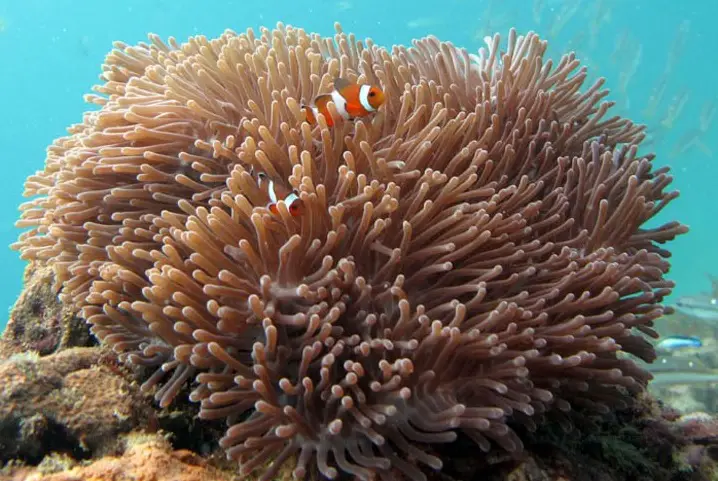Anemones are inhabitants of the seas and oceans, amazing in their beauty and diversity. Leading an absolutely immobile lifestyle, they occupy a kind of intermediate position between animals and plants, sometimes entering into symbiosis with some other marine inhabitants.

- Sea anemones are skeletal creatures that lead a sedentary lifestyle on coral reefs and marine soil.
- Among the anemones, there are both babies and real giants – the diameter of their bodies varies from a few millimeters to one and a half meters. Regardless of its size, the body is cylindrical.
- Anemones are attached to their “place of residence” with a special sole, and on the opposite side of these polyps, there is a mouth that resembles a slit surrounded by many tentacles.
- Undigested food remains from anemones are excreted from the body in the same way as they enter it – through the mouth.
- The role of the skeleton in anemones is played by the intestines. When polyps close the mouth, it becomes a closed system, isolated from the environment.
- The intestines filled with water, as well as the muscles of the body, allow some anemones to move along the bottom in search of more suitable habitat.
- The bodies of anemones are often brightly colored, for example, yellow or red, like that of starfish.
- Anemones feed on small invertebrates or fish – the tentacles paralyze the victim with the help of special bacteria, and then the anemones drag it into their mouths.
- A close acquaintance with anemones threatens people with severe and painful burns. Their venom leaves ulcers on the skin that do not heal for a very long time, much like the venom of some jellyfish.
- Anemones have learned to live in symbiosis with some fish and marine animals such as hermit crab and clownfish. Clownfish reproduce the composition of the mucus that covers the tentacles of anemones, protecting themselves from burns. Thanks to this, fish can live inside anemones, hiding there from enemies, and in return, ridding them of undigested food debris and ensuring the circulation of water.
- Other allies of anemones are boxer crabs. They clamp venomous polyps in their claws to attack enemies with them and defend their territory. In return, anemones receive the freedom of movement, constrained by the peculiarities of their physiology.
- The bodies of anemones are filled with a substance resembling jelly.
- In some regions of Spain and Italy, anemones are considered delicacies and are actively used in cooking. Most often they are fried in batter or pickled in a special sauce.
- Anemones got their name because of the similarity with the flower of the same name, although many of these polyps rather resemble aster buds.
- Scientists know more than one and a half thousand species of anemones.
- If the anemone is cut into pieces, it can fully recover in a fairly short period of time. Polyps constantly regenerate tentacles that have been damaged or lost during enemy attacks.
- Each row of anemonic tentacles is identical in color and length, although they may differ from row to row.
- Some anemones are unable to distinguish food from other objects, such as sand and small pebbles, and try to digest everything.

